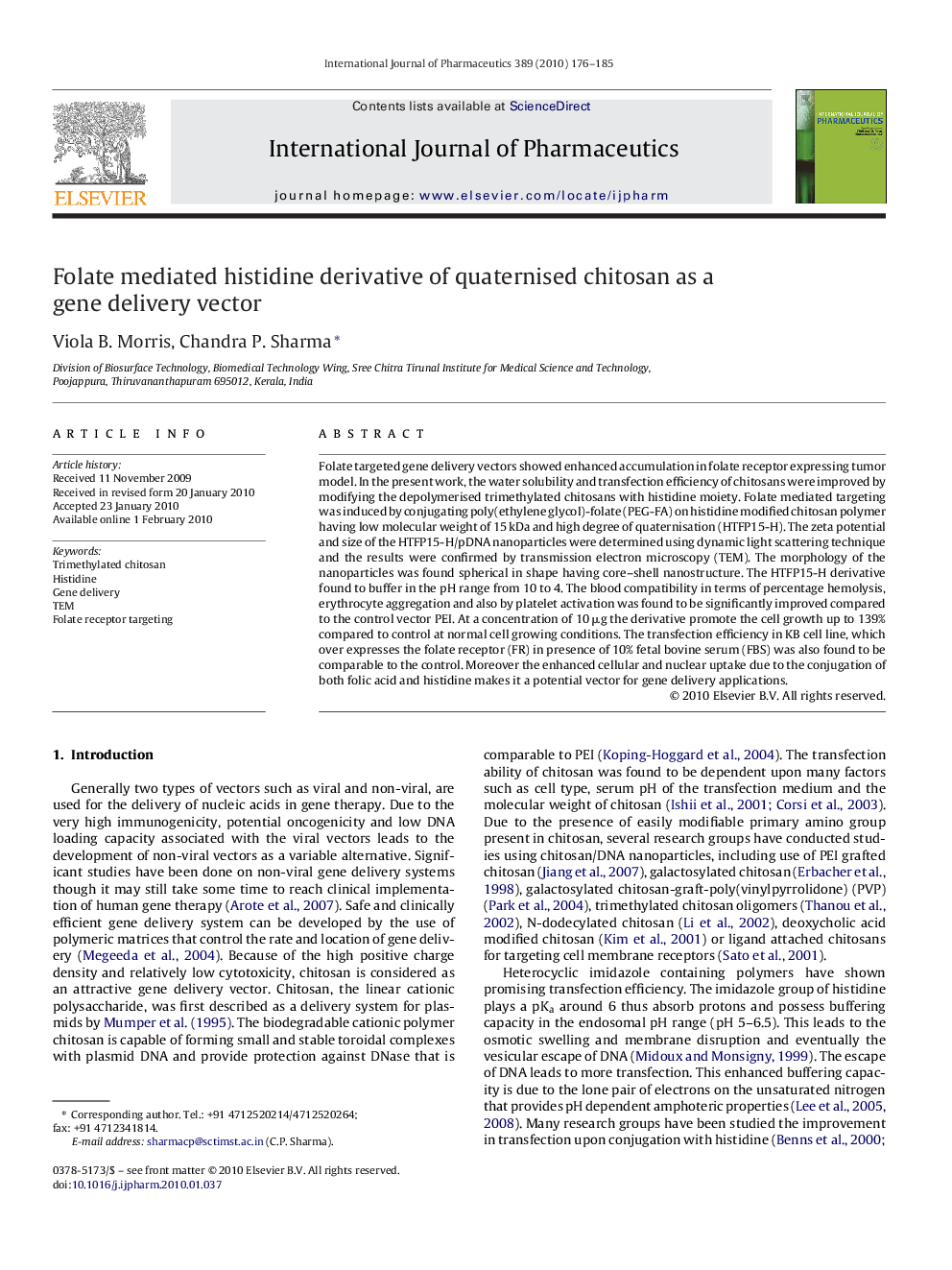| Article ID | Journal | Published Year | Pages | File Type |
|---|---|---|---|---|
| 2504222 | International Journal of Pharmaceutics | 2010 | 10 Pages |
Folate targeted gene delivery vectors showed enhanced accumulation in folate receptor expressing tumor model. In the present work, the water solubility and transfection efficiency of chitosans were improved by modifying the depolymerised trimethylated chitosans with histidine moiety. Folate mediated targeting was induced by conjugating poly(ethylene glycol)-folate (PEG-FA) on histidine modified chitosan polymer having low molecular weight of 15 kDa and high degree of quaternisation (HTFP15-H). The zeta potential and size of the HTFP15-H/pDNA nanoparticles were determined using dynamic light scattering technique and the results were confirmed by transmission electron microscopy (TEM). The morphology of the nanoparticles was found spherical in shape having core–shell nanostructure. The HTFP15-H derivative found to buffer in the pH range from 10 to 4. The blood compatibility in terms of percentage hemolysis, erythrocyte aggregation and also by platelet activation was found to be significantly improved compared to the control vector PEI. At a concentration of 10 μg the derivative promote the cell growth up to 139% compared to control at normal cell growing conditions. The transfection efficiency in KB cell line, which over expresses the folate receptor (FR) in presence of 10% fetal bovine serum (FBS) was also found to be comparable to the control. Moreover the enhanced cellular and nuclear uptake due to the conjugation of both folic acid and histidine makes it a potential vector for gene delivery applications.
